West Sicily Itinerary: 18 Best Things to Do in Western Sicily
Are you planning to visit West Sicily? you’re in for an absolute treat. Picture this: pristine beaches with turquoise waters. Throw into the mix, vibrant and ancient towns, welcoming locals and mouthwatering food and wine and you have the makings for an unforgettable getaway.
I’ve been lucky enough to visit Sicily three times, each trip unravelling something new. Let me assure you, there’s no shortage of remarkable things to do in Western Sicily.
So, whether you’re mapping out a whistle-stop weekend or you’re in it for the long haul with an island-wide road trip, this guide is packed with top picks for your West Sicily itinerary.
How many of these things will you plan to do on your West Sicily trip?
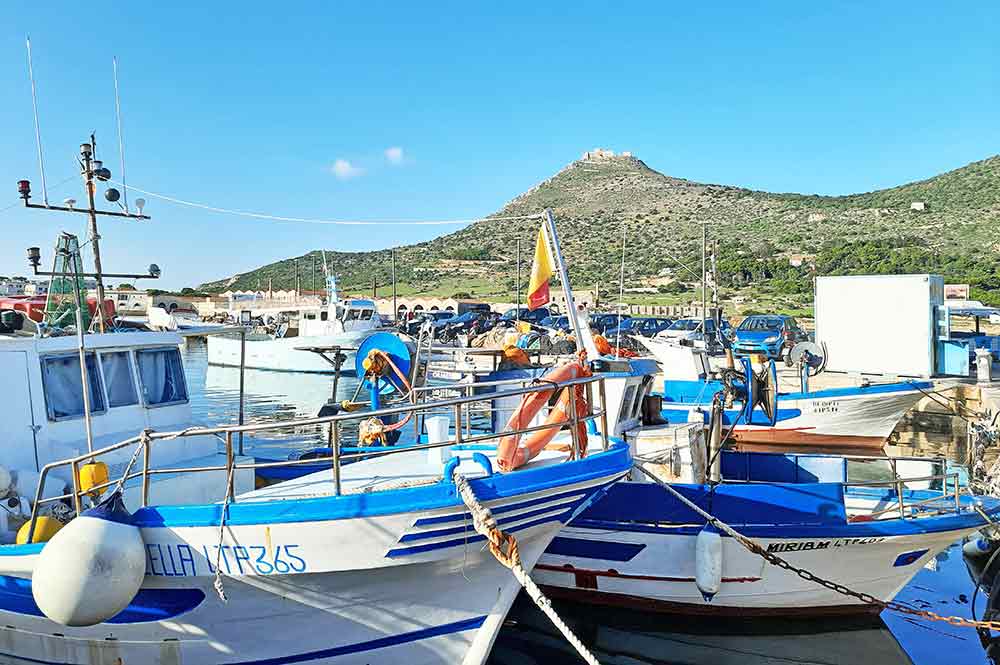
This post may contain affiliate links. To find out what this means and more information visit my disclosure page.
Must-Do Things for Your West Sicily Itinerary – At a Glance
If you’re in a rush and wondering what to do in West Sicily, fear not. This concise list packs in all the info you’ll need to plan your itinerary for Sicily.
There’s no denying that the western coastline is among the most beautiful places in Sicily — it’s practically impossible not to fall in love with its charms! If you’re thinking of venturing further into the island, just download this Sicily travel guide right to your mailbox.
My Top 10 Western Sicily Highlights
- Explore Old Trapani
- Visit the Salt Pans
- Discover Erice Medieval Hilltop Town
- Try the Marsala Wine
- Indulge in Sicilian Cuisine
- Explore the Ancient Runs of Selinunte
- Cruise or Hike Around Zingaro Reserve
- Get lost in the Casbah of Mazzara Del Vallo
- Island Hop Between The Egadi Islands
- eBike Around Favignana or the Coastal Route
I’ve partnered with West of Sicily Tourism to bring you this travel guide. This article is based on the destinations and experiences I took part in. All views and opinions are my own.
Best Things to Do in Western Sicily
If you’re in the stages of planning a trip to Sicily, be sure to allow at least a few days for the west of the island. The region boasts some of the best places in Sicily for sandy beaches, historical towns and delicious food. Let’s start planning your west coast Sicily itinerary.
West Sicily Must See: Location Map
This map shows where all these West Sicily highlights are located. Click on it to download an interactive version of this map of western Sicily.

1. Explore Old Trapani
Located in northwest Sicily is the bustling town of Trapani. This is one of the major towns in the region, and although it’s a reasonable size, the historical old centre is compact and can easily be explored on foot.
This is one of the best cities to visit in Sicily if you’re interested in beautiful architecture. The historical centre is filled with buildings with styles ranging from Baroque to Art Nouveau and you can easily whittle away a few hours wandering the narrow streets. The most notable streets are Via Garibaldi, Corso Italia and Corso Vittorio Emanuele.
Don’t forget to walk along the city’s sea walls, Mura di Tramontana. Start at the old fish market square, Piazza Mercato del Pesce, and walk to the old Bastion, Bastione Conca. When you walk this route, you might miss the gateway in the wall (you will walk over the top) so after visiting the old Bastion, retrace your steps and take the steps down to see the Porta delle Botteghelle, the old gateway.


The best green space in the city is Villa Margherita Park. If you’re after shopping then head to Via Giovanni Battista Fardella, which is a tree-lined boulevard filled with cafes, shops, shoes and restaurants.
If you’re interested in local souvenirs, then you might be interested in traditional red coral jewellery. The items here are all handcrafted on-site, you can see the workshop at the back of the shop. The jewellery on sale here is the work of the Trapani-born coral craftsman, Platimiro Fiorenza, he even has UNESCO Status!
Be sure to add these landmarks to your Trapani itinerary
- Ligny Watch Tower, (Torre di Ligny)
- The Twin Clock Tower, (Palazzo Senatorio)
- The Gateway of the Clock Tower, (Porta Oscura, Torre dell’Orologio)
- Church of the Jesuit College, (Chiesa del Collegio dei Gesuiti)
- Church of the Souls in Purgatory, (Chiesa delle Anime Sante del Purgatorio)
Read More: The Best Things to Do in Trapani
2. Visit the Salt Flats
Northwest Sicily is home to numerous salt pans. At its peak, in the 1860s the western coast of Sicily was home to 31 salt pans producing over 100,000 tonnes per year. Today, a handful of the salt pans are still in operation, and one is just outside Trapani.
The family-run salt museum is located inside a 17th-century mill. You’ll see a giant windmill on the top of the building and wander around the salt pans. Inside, you can join a guided tour of the salt flats that will take you through the importance and history of sea salt harvesting. There’s also an onsite shop where you can buy salt-based products.
These are a must-see on your western Sicily itinerary. The salt pans look particularly stunning during golden hour, which makes the mounds of salt glow in a vibrant orange colour. To experience this, plan your visit towards the end of the day.
📍 You can get to the salt flats by driving, or taking a taxi. Alternatively, you can join a tour of salt flats from Trapani with transportation included. 📍

3. Go Up to Erice Medieval Hilltop Town
One of the easiest day trips from Trapani is to the hilltop Medieval town of Erice. It’s located about 750 metres (2,460 ft) above sea level and looks down on Trapani and the surroundings including the dramatic landscapes of Punta del Saraceno and Capo San Vito to the northeast.
If you have time during your Sicily west coast itinerary, take a trip out to some of the islands, they are close. You can even see the Aegadian Islands which are just off Sicily’s north-western coast from Erice.
Although you could drive, cycle and even walk up Mount Erice, the most exciting way to get up there is via the cable car. As you go up, you’ll start to see the thin layer of cloud that nearly always envelops the town. These clouds are known locally as the kisses of Venus.

You can easily spend a whole day here exploring the timeless and photogenic cobblestone alleyways. There are so many quirky little features too, look out for the row of crosses on the wall of the Church of Santa Maria Assunta and the adorable little window catches that have a different figure when they are flipped up and down.
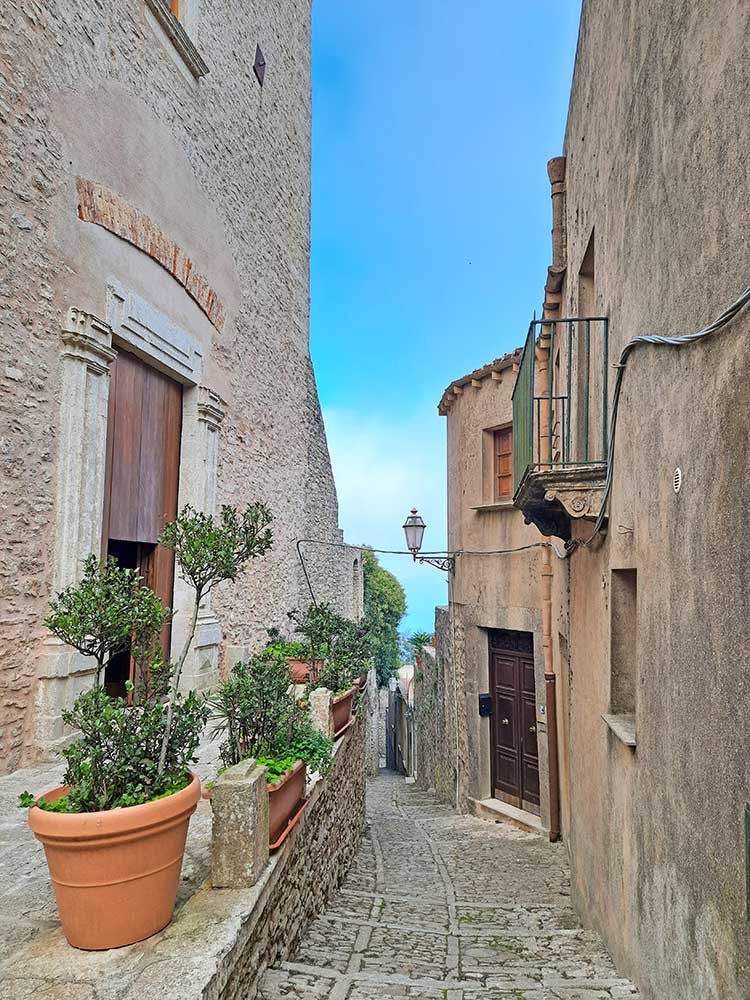
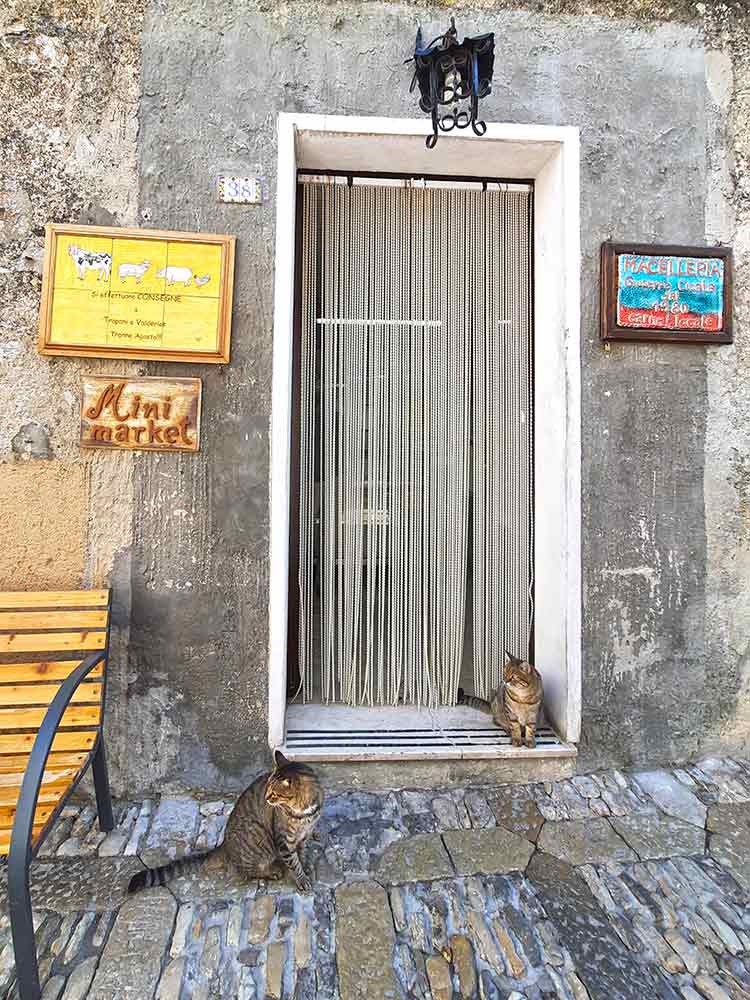
Because of its vantage point, this is one of the best towns in western Sicily for views. There are numerous panoramic look-outs around the city. You’ll find stunning ones at the Garden of Balio and upstairs in the Church and Convent of San Domenico.
If you’re limited on time to explore the region and wondering where to go in Sicily, you’d be absolutely gutted if you missed out on Erice. This is one of the best places to see on the west coast of Sicily and If you intend to see a lot in the city then it might be worthwhile purchasing the Erice Card.
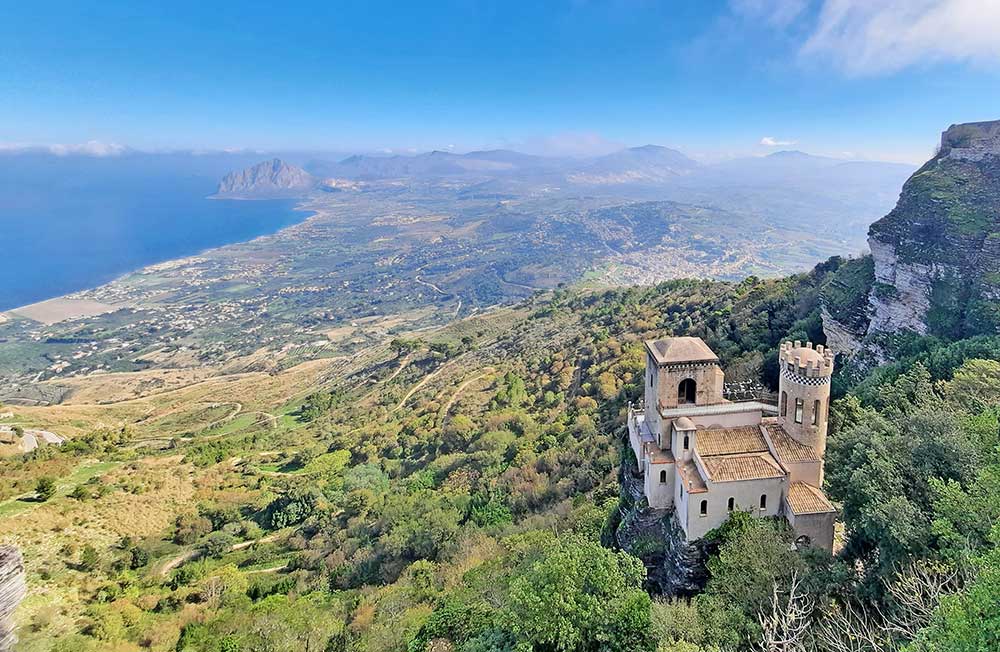
Read Next: 40+ Incredible Experiences in Italy
4. Try the Wine (all the wine!)
The words wine and Italy are synonyms, so it’s no secret that you’ll find outstanding wine wherever you are on the island. If you’re visiting Erice, I recommed a stop at Strada del Vino Erice D.O.C which is just outside the city walls.
The soil, dry climate and sun exposure make the region perfect for producing top-quality Sicilian wines. Stop off here to enjoy the tasting experience, you’ll try up to five different wines with a selection of local foods to complement them.
This is the best place to go in Sicily if you’re looking to try some of the best Sicilian products. You can walk into the shop and book the experience directly or contact them via the website.

5. Discover the Cuisine
In terms of world cuisines, Italian food always ranks as some of the best. The best place in Sicily to experience Sicilian hospitality with food straight from the farm to plate is as part of a farm stay.
All of the food I ate in Sicily was sublime, from the antipasti to the main dishes. My absolute favourite that I couldn’t get enough of was the caponata. This a sweet and sour-tasting starter dish made from aubergines. Depending on where we ate, sometimes it had additional ingredients including courgettes, olives and tomatoes.
Another tasty culinary delight was the busiata pasta. This long spiral pasta is handmade by wrapping it around a spindle. It came with various sauces, however, some of the best pasta dishes we had were simply served with olive oil and grilled vegetables.
And don’t forget to try the cassatelle.
I tried these as a savoury and sweet version. Essentially they are little filled pastries. The savoury version was with ricotta and onion or potato puree served in a light broth. The sweet version was filled with sweetened ricotta being lightly fried and sometimes dusted with icing sugar. They were delicious!
Even as a vegetarian, there were SO MANY delicious options for outstanding food. I certainly ate well during my time in Sicily.


6. Learn To Cook Traditional Sicilian Food
If you love the food here, and let’s face it, who doesn’t, then one of the top things to do in Sicily is to take part in a cooking class.
I tried my hand several times during my time in Sicily, making cassatelle (ricotta-filled pillows of pastry), learning how to twirl pasta and creating decorative bread. Anyone who knows me will tell you that I’m notoriously bad in the kitchen, not through lack of trying, I just lack this skill – monumentally!
Despite my lack of kitchen skills, it was great fun to get stuck in and share Sicilano’s passion for food.
All the ingredients we used were locally sourced and made from scratch, and their secret ingredient; love! All of their food is made with an abundance of love which oozes out of the kitchen. The best part of learning to cook is that you get to eat everything you make (I’m definitely better at this!).
If you’re interested in learning to cook authentic Italian food, a cooking class is one of the best things to do in West Sicily. Check out the brother and sister-owned, Like Italians Do. It’s located around the back of an old mill called Molino Excelsior (which is also worth a visit if you want to see some interesting vintage machinery).
They provide all the ingredients and take you step-by-step to create a delicious traditional Italian lunch.


7. Island Hop Between The Egadi Islands
There are numerous islands near Sicily, and of these, just off the coast of Sicily’s north-west, are the simply stunning Egadi Islands; Favignana, Levanzo and Marettimo. Of the three, Favignana is the largest with a population of around 3000 inhabitants.
If you look up any list of the 10 best places to see in Sicily, I guarantee that the Egadi islands will appear somewhere on the list. Think quaint towns, white (even pink) sandy beaches surrounded by crystal clear waters, enough to rival any Caribbean island.

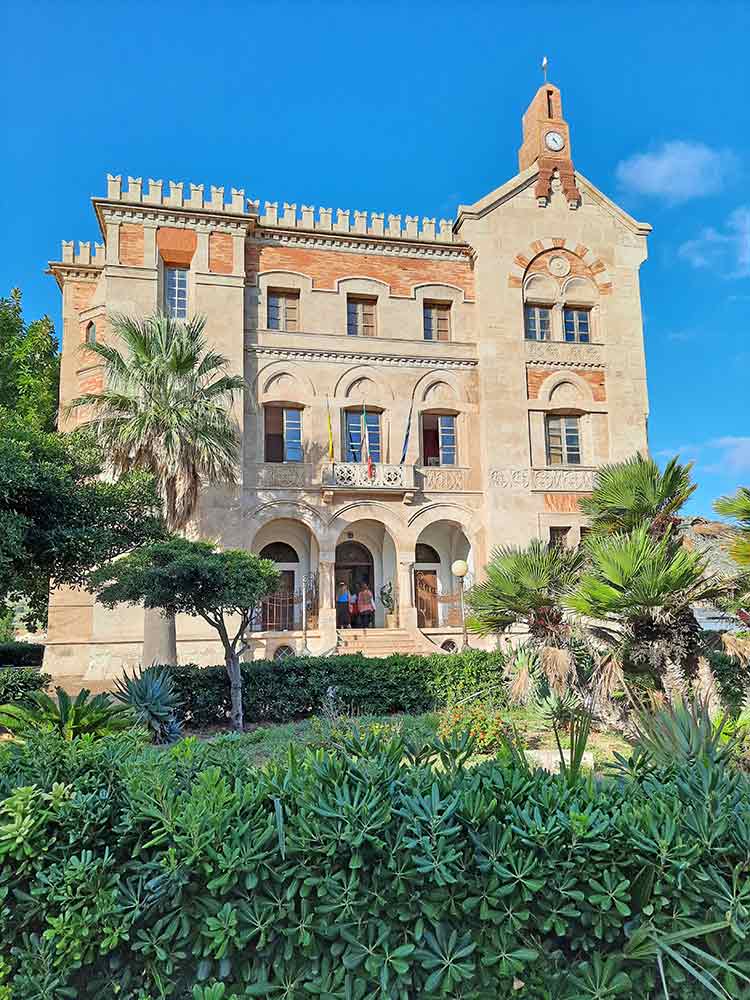
Adjacent to the Marina, you’ll find a large pinkish building. This was once the countryside residence of the wealthy Florio family. It’s a mix of Neo-Gothic and Neopolitan styles, and you’ll see the symbology of a Lion dotted all over the exterior and interior of the building.
Initially, the family gained their wealth through trading with the East with the lion symbol representing good health. Then they moved their trade to the production of sulphur and Marsala wine.
The Florio family then made a name for themselves through the tuna trade. The first documented evidence of tuna production on the island dates back to 1577. Along the waterfront, opposite the marina and the mansion, you’ll see a large old building. This building dates back to 1859 and was owned by the Florio family. Tuna production continued until 1977.

Today the building houses a museum with some rooms explaining the importance of this industry to the wealth of the island. You can wander around the rooms and still see the shelters housing the ready boats, and various artefacts linked to the industry.
Being a vegetarian, admittedly I wasn’t overly interested in the history of fish production, however, some rooms have a couple of great exhibitions along with historical artefacts on the war between the Romans and the Arabs, so it was certainly worth visiting for this alone. Another point of interest here is near the entrance, there is a side room dedicated to marine conservation and the rehabilitation of sea turtles.
The islands are just off the coast of north-west Sicily, and an easy day trip from Trapani. The quick transfer service is run by Liberty Lines, check their website for the full timetable and tickets.
⛴️ There are several crossings a day by ferry and hydrofoil every day. Getting to the Egadi Islands in West Sicily is easy. ⛴️
8. Cycle or eBike Around Favignana
If you want to explore more of the island of Favignana, then the best way of getting around is via eBike. I first experienced eBikes on a trip around Mount Etna in the east of Sicily, and I’ve been hooked ever since.
The roads here are fairly quiet, especially if you’re outside of the main town, so it’s safe to cycle here. A great spot to head to, where you’ll find a hidden white sandy beach is Cala Azzurra. This little bay on the southeast of Favignana is calm and shallow.
Thanks to the lack of traffic on the island, this is one of the best destinations in Sicily for leisurely cycling. If you’re feeling really energetic, then you could explore the whole of the island by eBike in a day, also head up to the Castle of Santa Catarina, which is the highest point on the island.
There are several places to hire bikes next to the marina. You can rent them for just an hour right up to a full day.

Read Next: eBiking and Hiking around Mt Etna, Sicily
9. Cruise or Hike Around Zingaro Reserve
The Sicily west coast is home to some of the most beautiful nature reserves. With no coastal road and the sound of traffic (even cycles!), the Riserva dello Zingaro is one of the best locations in Sicily for anyone looking for pure blissful relaxation.
The coastal path follows an undulating seven-kilometre-long route between Scopello to San Vito Lo Capo passing numerous secluded coves and some of the most exclusive western Sicily beaches only accessible by foot – or swimming from a boat.
A great way to experience this beautiful area is by boat, which stops off at various spots along the way. You can either relax on the deck, on the beaches or swim in the warm and clear seas.
Various boats depart from San Vito Marina. If you’re interested in a full-day small-group excursion then book in advance through Hyppocampus. They offer a morning departure per day and limit their passengers to just 12. They often sell out during peak season, so book well in advance.
🚤 To enjoy the beautiful coastline and crystal clear waters of San Vito Lo Capo and Zingaro Park, book a boat trip 🚤

10. Learn about Gibellina & Visit the Grande Cretto Memorial
If you’re planning a full Sicily road trip, then be sure to add the little town of Gibellina to your itinerary. The original Gibellina was a mountainside town, however, it was destroyed by the 1968 Belice earthquake.
Today, an enormous monument called Cretto di Burri stands in its place. The block-like monument represents the town of Gibellina, with each block taking up the footprint of a building that once stood there.

Gibellina was not rebuilt in the same place but instead moved 11 kilometres (7 miles) away and is known as Gibellina Nuova. The authorities on mainland Italy offered little in terms of help to the people of Gibellina after their town and lives were destroyed, it was deemed as an unimportant area and the people could just move elsewhere. Word got out and it became a bit of a mecca for prominent artists and architects to create work aimed at rebuilding the town.
The Contemporary Art Museum of Gibellina houses many of the pieces of work that were created to help rebuild the town, along with information about the people who lived in Gibellina and their plight to get their town rebuilt.

Surrounding the area there are other iconic landmarks including a gigantic star that stretches over the highway which marks the entrance to the town (Stella d’ingresso al Belice), and a hillside installation of charcoal black horses standing on white concrete (to represent the salt that west Sicily is famous for ( Montagna di sale).

11. Visit the Cave Village of Grotta Mangiapane
One of the most adorable and unique villages in Sicily has to be the cave village of Grotta Mangiapane. This settlement was inhabited from 1819 right up to the mid-1900s. The region consists of a total of nine different caves, however, it’s the largest one, the Mangiapane cave, really showcases what life was like in this unusual Sicily village.
The cave is about 70 metres high, 13 wide and 50 deep, in the entrance is what feels like a regular high street with different shops, tanners, a bar, cobblers, ironmongers etc. Scattered around the mouth of the cave are small houses and workspaces, including a small mill for the production of olive oil.
It’s fascinating to see how people would have lived here, under the protection of the cave system.
You can, of course, wander about by yourself, or take a guided tour with a very extroverted, animated and enthusiastic guide to show you around. They don’t speak English, however, this didn’t matter as everything was dramatised and demonstrated to make up for the language barrier.


12. 4×4 Ride Through Cave di Santoro Marmi Quarry
I absolutely love 4×4 and offroading, so I was pleasantly surprised to hear how in northwest Sicily, you can do just this in a quarry. Something I’d never experienced before.
Santoro Marmi is located in Custonaci and is the second most important marble-producing region in Europe. This is due to the size of the quarries as well as the quality of the marble extracted here.
The quarry was opened in 1992 by the Santoro brothers, Giuseppe and Vincenzo and today it extends over 70 hectares. The marble is exported to buyers all over the world.
The 4x4s take you through the quarry, up the hillside and drive amongst the huge chunks of sugar-cube-like gleaming blocks. If you want to realise how tiny a human is in the grand scheme of the world, this place certainly puts things into perspective.
Tours are given to groups and individuals and can be arranged online by contacting Santoro Marmi Quarry directly.

13. Explore The Ancient City of Salemi
If you’re interested in Sicilian trivia, then did you know that Salemi was the first capital of Sicily? I didn’t know either until I visited. If you’re into history, then this small city will be one of the top highlights Sicily offers.
The city was shaped by the Greeks, Romans and then the Arabs amongst other civilisations. The name Salemi actually comes from the Arabic word “salem,” which means peace. It was also the Arabs who introduced things like saffron, cloves and cinnamon to the island of Sicily.
One of the best things to do in Salemi is to wander the lightly coloured Medieval streets. In the historic centre, the narrow streets meander on the hillside. At the top of the hills is the 11th-century castle which dates from the reign of the Normans and still remains one of the most prominent landmarks in the city to this day. Close to the castle are the remains of the Madrice Vecchia (“Old Mother Church”).


Aside from exploring the photogenic town, other things to visit is the former Jesuit College which is now home to several museums including the Museum of Sacred Art, the Museo del Risorgimento and the slightly unnerving Museo della Mafia.
An ancient tradition in Salemi is the decorative devotional bread. In the past, these were used for the religious festivals of Saint Joseph (19 March), Saint Anthony the Abbot (17 January) and Saint Blaise (3 February). The intricate bread looks too good to eat, features bouquets, wreaths and weaving and is available in bakeries in the city.
14. Eat Street Food of Palermo
Palermo, the vibrant capital of the Sicilian island, is a paradise for food lovers with its bustling and thriving food scene.
As a veggie traveller, I discovered that it was nearly impossible to go hungry in Sicily. Despite the abundance of meat and fish dishes, I never felt like I was missing out. Sicily offered a wide array of delicious vegetarian options that satisfied my taste buds completely.
Palermo is quite a spread-out city, one of the best ways to all the highlights is on a guided city bike tour. I went with Sicicla, they offer regular bikes and eBikes (of course I opted for eBike), safety equipment and a guide). The tour also included a stop for lunch at the street food markets.


The city’s street food culture is a gastronomic celebration of its rich history and fusion of cultures. Here’s a quick, mouth-watering tour of some must-try street foods in Palermo:
- Arancini – These delicious and filling rice balls are stuffed with various fillings like cheese, meat, or vegetables, coated in bread crumbs, and then deep-fried to perfection.
- Pane e Panelle – A popular chickpea fritter sandwich, Pane e Panelle is a perfect example of Sicilian comfort food.
- Cannoli – You simply can’t leave Palermo without trying Cannoli. This iconic Sicilian treat is a deep-fried pastry tube filled with sweet, creamy ricotta.
- Sfincione – Sfincione as the Sicilian take on pizza. This soft, thick bread is topped with tomatoes, onions, and anchovies (skip this topping if you’re a veggie), and often sprinkled with breadcrumbs.
- Crocchè – Also known as potato croquettes, Crocchè are mashed potato dumplings, often filled with cheese or ham, breaded and fried.
- Granita – To cleanse your palate, grab a Granita, a semi-frozen dessert made from sugar, water, and various flavourings. The most popular flavours are lemon, almond, and coffee – the perfect refreshing treat on a hot Sicilian day! You’ll often find granita served in a brioche bun!


15. Explore the Region’s Ancient Ruins
The West of Sicily is blessed with a wealth of ancient ruins. If you’re visiting the region, then I highly recommend adding at least one of these sites to your itinerary.
Selinunte
Selinunte is a sprawling archaeological site in West Sicily – it’s the biggest archaeological site in Europe, it’s so spread out that there’s actually a land train that takes you between the points of interest.
This ancient Greek city was founded in the 7th century BC and today boasts several well-preserved temples and other structures. One of the highlights is the Temple of Hera, which is one of the largest and best-preserved ancient Greek temples in existence.


Segesta
Located on Mount Barbaro, Segesta is an impressive archaeological site that dates back to the 5th century BC.
The main attraction here is the well-preserved Doric temple, which sits atop a hill and offers stunning views of the surrounding countryside. The site also includes a theatre, agora, and other ruins that give insight into ancient Greek life.
Valley of the Temples
If you’re able to extend your west Sicily trip, then I also recommend one of the island’s most iconic ruins sites. Located on Sicily’s southern coast near Agrigento, the Valley of the Temples is a sprawling archaeological site that features some of the most impressive Greek ruins in Italy.
Some highlights include The Temple of Concordia, the largest and best-preserved temple on the site, as well as The Temple of Juno and The Temple of Hercules.

16. Learn About Marsala and Its Namesake Wine
Marsala, a beautiful coastal town in West Sicily, is known for its stunning beaches, rich history, and of course, its namesake wine. This fortified wine has been produced in Marsala since the late 18th century and is a staple in Italian cuisine.
Marsala wine is made from local grapes, primarily Grillo, Catarratto, and Inzolia. The grapes are aged in oak barrels for a minimum of one year to create a rich and complex flavour.
In addition to its unique production process, Marsala wine also comes in three different styles: fine, superiore, and vergine. Fine is the most commonly used in cooking, while superiore is typically enjoyed as an aperitif. The highest quality, vergine, is often served as a dessert wine and is aged for at least five years.
In the early 19th century, English merchants began to export Marsala wine to England where it gained popularity among the British aristocracy. It also played a significant role in the unification of Italy, with Giuseppe Garibaldi using it as a source of funding for his military campaigns.
Today, Marsala wine is celebrated and recognized around the world for its unique flavour. I highly recommend visiting at least one of the wineries – I visited Alagna Vini. Join a tour to learn more about the wines of the region and the best part – you’ll get to sample them!

17. Explore the Casbah of Mazzara Del Vallo
Located on the west coast of Sicily, Mazzara Del Vallo is a picturesque town that boasts stunning beaches and historical landmarks. One of its must-visit attractions is the Casbah, a charming neighbourhood known for its narrow streets and traditional Arabic-influenced architecture.
Plenty about this little district reminded me of my trip to Morocco. The vibrant colours, the intricate tile work, and the decorative elements.
But what sets the Casbah of Mazzara Del Vallo apart is its unique blend of Italian and North African influences. The Casbah is home to a diverse community that has preserved its cultural heritage for centuries.
As you wander through the labyrinth of narrow alleyways and staircases, you will come across quaint shops selling traditional handicrafts and local delicacies as well as bars where you’ll see people sitting smoking shishas.


18. Cycle the Coastal Route
If you’re an eco-conscious traveller, one of the best ways to explore a new destination is by cycling. Not only is it great for the environment, but it also allows you to take in the sights and sounds at a slower pace.
The flat coastal roads connecting Trapani and Marsala are a cyclist’s dream. You’ll pass by stunning beaches, quaint villages, and salt pans. Keep an eye out for wildlife – if you’re lucky you might even spot wild flamingoes!
You could cycle this route independently, or join a guided tour that will provide everything you need – opt for either manual bikes or eBikes. I did a tour with Sicicla, who specialises in cycle tourism and ecotourism in Sicily. They have a branch based in Palermo.

West Sicily Travel Guide FAQs & Travel Tips
I’ve gone into detail about the fabulous things to add to your west coast Sicily itinerary. This section has the answers to questions that frequently come up when planning your western Sicily tour.
Getting to the West of Sicily
There are two ways to get to the west of Sicily, these are by boat or by air.
The nearest airports are the ‘Vincenzo Florio’ in Trapani, then get a transfer from Trapani Airport to Trapani city centre. You could also arrive at ‘Falcone e Borsellino’ in Palermo.
If you’re coming by boat, then the port of Palermo is connected to the major Italian and international ports.
Getting Around Sicily
West Coast Sicily is reasonably easy to get around between the main towns and cities. However, to get the most out of your trip to Sicily, ideally, you will need your own transportation, whether that’s by car, motorbike or bicycle. Many of the places of interest in Sicily are spread out and difficult to get to by public transport.
If you want to drive and plan on doing a road trip around Sicily, then check out car hire in Sicily here.
The main towns are connected by bus, and in some cases trains if you’re starting from the east of the island.
What Are The Best Small Group Tours Around Sicily
If you’re planning a trip around Sicily, then check out some of these other great tours for inspiration. Here are some of the best things to do in Sicily.
Is Sicily Safe?
I found Sicily to be an incredibly safe destination and even walking around the cities on my own at night I felt fine. That being said, it’s always worth using your common sense and not flashing valuables about, having an alternative payment method and telling your accommodation where you’re going if you’re planning on hiking anywhere.
What’s Going On Your West Sicily Itinerary?
So, now you know about all the best things to do in Western Sicily. Whether you’re on a short city break to the region, or you’re exploring more of the island, there’s a lot to keep you occupied here.
How many of these ideas have made it onto your west Sicily bucket list?
If you’re doing more travelling in Sicily, then take a look at these other inspirational articles.
- 40+ Incredible Experiences for your Italy Bucket List
- The Best Things to Do in Trapani
- The Amalfi Coast Road Trip in Italy
Save it for later
If you found this West Sicily itinerary guide useful, or know someone who will, then like, share and Pin for later.
Have a question about anything in this article? then head to the Contact page and drop me a message.









